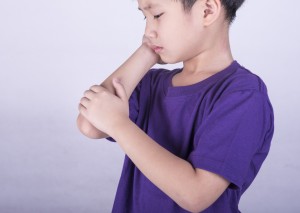Summer is when we usually spend more time outside either exercising or just enjoying the weather. Unfortunately, it is also the time when mosquitoes and ticks are at their most active and the possibility of exposure to West Nile virus and Lyme disease increases.
According to the CDC, West Nile virus (WNV) is most commonly transmitted to humans by mosquitoes. About 1 in 5 people who are infected will develop a fever with other symptoms. Less than 1% of infected people develop a serious, sometimes fatal, neurologic illness with young children and seniors being the most susceptible. Symptoms include fever, headache, body aches, skin rash, and swollen lymph glands. Severe symptoms may include stiff neck, sleepiness, disorientation and tremors. Using insect repellent, wearing protective clothing to prevent bites, and limiting your time outside during key mosquito times like dusk, can help reduce your risk of infection.
Lyme disease is transmitted to humans through the bite of infected blacklegged ticks and is difficult to diagnose. Typical symptoms include fever, headache, aches and pains, fatigue, the possibility of exposure to infected ticks, and a characteristic skin rash called erythema migrans, which resembles a bull’s-eye. If left untreated, infection can spread to joints, the heart, and the nervous system. 
Most cases of Lyme disease can be treated successfully with a few weeks of antibiotics. Steps to prevent Lyme disease include using insect repellent, removing ticks promptly, applying pesticides, and reducing tick habitats by frequently mowing the lawn, removing leaf litter, old furniture, mattresses, and trash from the yard that may give ticks a place to hide.
All content of this newsletter is intended for general information purposes only and is not intended or implied to be a substitute for professional medical advice, diagnosis or treatment. Please consult a medical professional before adopting any of the suggestions on this page. You must never disregard professional medical advice or delay seeking medical treatment based upon any content of this newsletter. PROMPTLY CONSULT YOUR PHYSICIAN OR CALL 911 IF YOU BELIEVE YOU HAVE A MEDICAL EMERGENCY.








 Headphones are popular for a multitude of reasons, such as convenience and sound quality, but there is a downside to these devices. According to The Journal of the American Medical Association, the number of teens who have experienced hearing loss has increased by 33% since 1994. Do you catch yourself blasting music while listening to your headphones for long periods of time? If so, your hearing may be at risk.
Headphones are popular for a multitude of reasons, such as convenience and sound quality, but there is a downside to these devices. According to The Journal of the American Medical Association, the number of teens who have experienced hearing loss has increased by 33% since 1994. Do you catch yourself blasting music while listening to your headphones for long periods of time? If so, your hearing may be at risk.